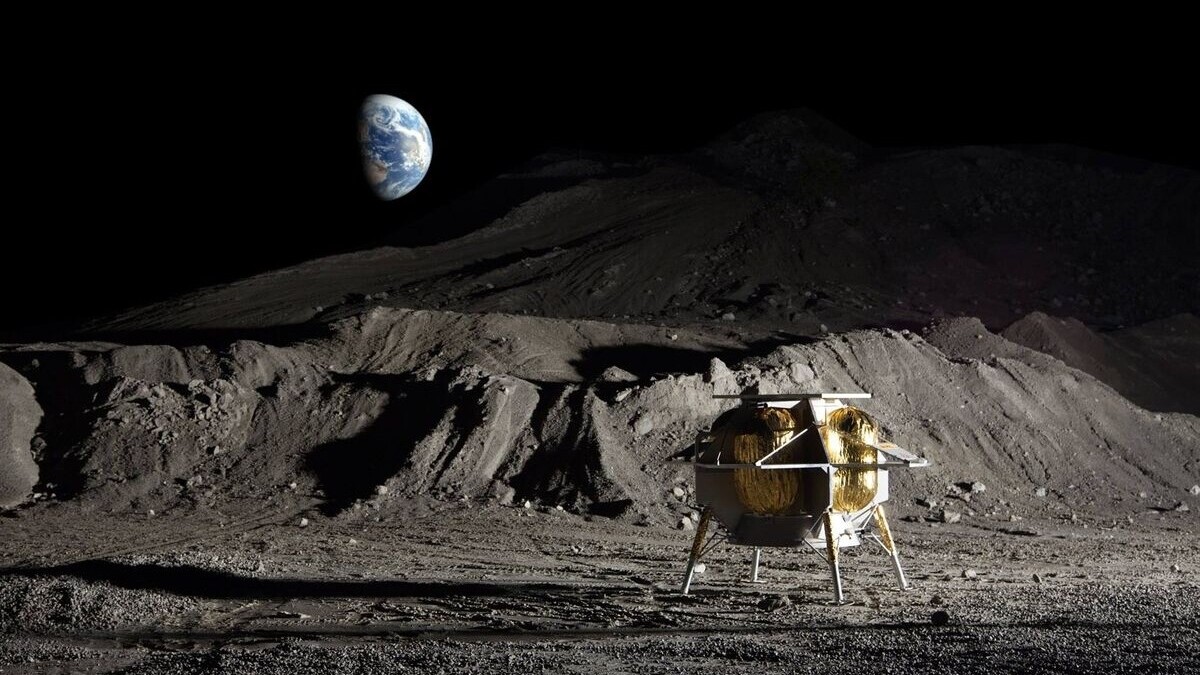
The Peregrine lunar lander is set to crash back to Earth in a sudden end to a mission that was set to put the first piece of European-built technology — and the human remains of a distinguished British sci-fi author — on the Moon.
Shortly after launching from Cape Canaveral space station on Monday January 8, the spacecraft suffered a “critical loss of propellant” and was doomed to failure ever since. It is now expected to crash land into Earth on January 18.
Astrobotic Technology, the company that built the lander, said it is now working with NASA on a “controlled re-entry” of Peregrine. The firm expects the lander to burn up in Earth’s atmosphere, and not pose any safety risks.
Peregrine Mission 1 was to be the first time an American company sent a spacecraft to the moon and the first time the US returned to the lunar surface in more than 50 years. It was also carrying several payloads and novel instruments, including the first piece of European technology ever to touch down on the moon.
Known as an Exospheric Mass Spectrometer (EMS), the tech was a crucial component of Peregrine. Built by the UK’s Open University and RAL Space, the instrument was designed to explore the Moon’s atmosphere, unlocking the mysteries of its water cycle.
Years in the making, the EMS is part of a larger scientific instrument jointly developed by NASA and ESA, known as the Peregrine Ion Trap Mass Spectrometer (PITMS). PITMS will “sniff out” lunar gases, providing valuable insights into lunar composition and conditions.
Speaking of the failed mission, Dr Simeon Barber of The Open University said they were now “racing against time to get the very best from the PITMS instrument in these challenging circumstances”.
As Peregrine disintegrates upon reentry, so will all its payloads, which include the human remains of British science fiction writer Sir Arthur Charles Clarke (who co-wrote the screenplay for the 1968 film 2001: A Space Odyssey). The lunar lander also contained the remains of multiple Star Trek cast members and the DNA of four former US presidents.
Despite a disappointing end, Astrobotic CEO John Thornton remains optimistic. “This mission has already taught us so much and has given me great confidence that our next trip to the Moon will achieve a soft landing.”
Astrobotic’s next mission to the Moon is scheduled for November 2024. Its Griffin lander will take NASA’s VIPER rover to the lunar south pole where it will explore the mysteries of its water and better understand the environment where NASA plans to land astronauts in 2026.
When’s Europe’s turn?
The fact that Europe hasn’t even landed its first piece of technology on the Moon yet, let alone a human being, shows just how far behind we are in the new space race. As of now, it seems that the first European astronaut to land on the Moon will be somewhere around 2028, aboard NASA’s Artemis IIII mission.
However, things are looking more promising from a technology perspective. Late last year the European Space Agency (ESA) announced is will start a competition to develop commercial vehicles to transport cargo to and from the International Space Station (ISS) by 2028. This would be a step towards developing a fully European-made crewed vehicle, the ESA’s director general Josef Aschbacher said at the time.
This would be the first time that Europe has developed a crew transportation vehicle. While it would initially be used to transport humans to and from the ISS, Aschbacher said that in the future it could also serve other destinations beyond low Earth orbit — in other words, bases on the Moon and Mars.
The opening of the competition signals the strengthening of Europe’s private space sector, where government agencies contract companies to provide critical services like launch capability. This model, pioneered by NASA and Elon Musk’s SpaceX, has proved remarkably successful in driving down costs and accelerating space exploration.
Get the TNW newsletter
Get the most important tech news in your inbox each week.




